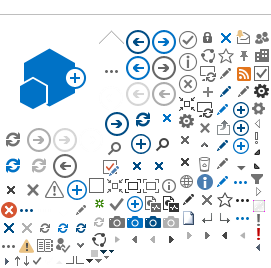| 2103 | Web-Man - Webbasiertes Nährstoff-Management im ökologischen Landbau | Web-Man - Web-based nutrient management in organic farming | 01/02/2019 00:00:00 | 30/04/2025 00:00:00 | abgeschlossen | completed | Programmbereich 2 „Landnutzung und Governance“ | Research Area 2 „Land Use and Governance“ | x4x16x | Bachinger, Johann; Geistert, Jonas | x190x3128x | <div class='ntm_PB2'>PB2</div> | | | 2019 | Web-Man - Webbasiertes Nährstoff-Management im ökologischen Landbau Web-Man - Web-based nutrient management in organic farming Programmbereich 2 „Landnutzung und Governance“ Bachinger, Johann; Geistert, Jonas Drittmittel Research Area 2 „Land Use and Governance“ completed abgeschlossen <div class="ExternalClass76D44893017849769736DC421B5937F4">Projektziel ist die Entwicklung und Praxiserprobung eines webbasierten Nährstoffmanagementsystems für den ökologischen Landbau, das dazu dient,<br>
<ul><li>den Nährstoff- und Düngebedarf landwirtschaftlicher Kulturpflanzen zu ermitteln,</li><li>den Nährstoffanfall in der Tierhaltung und in Biogasanlagen zu berechnen,</li><li>inner- und überbetriebliche Nährstoffkreisläufe zu analysieren und zu optimieren,</li><li>Handlungsempfehlungen zur optimalen Düngung und Fruchtfolgegestaltung im landwirtschaftlichen Betrieb zu geben.</li></ul>
Auf der Grundlage einer fruchtarten-, ertrags- und qualitätsbezogenen Düngebedarfsermittlung werden unter Beachtung betrieblich verfügbarer Düngermengen Handlungsempfehlungen zu Düngermenge und -qualität, Düngetermin und Staffelung von Düngergaben gegeben. Die Ableitung und Visualisierung der Handlungsempfehlungen erfolgt mit Entscheidungsbäumen,um eine hohe Transparenz der Düngeempfehlungen zu gewährleisten.<br>Das Nährstoffmanagementsystem wird mit dem Fruchtfolgeplanungsinstrument „ROTOR“ vernetzt (Harmonisierung der Humus- und Nährstoffbilanzparameter und -algorithmen, Schnittstellen zum Datentransfer), um beide Instrumente gemeinsam in Ökobetrieben anwenden zu können. ROTOR ergänzt mit Aussagen zur Fruchtfolgeplanung und -optimierung (Integration von Leguminosen und symbiotischer N2-Fixierung in Fruchtfolgen) das Nährstoffmanagementsystem. Beide Instrumente werden in Ökobetrieben unterschiedlicher Struktur (Marktfrucht-, Biogas-, Milchvieh-, Gemischtbetriebe und Betriebsgemeinschaften, z.B. Futter-Mist-Kooperationen) bei unterschiedlichen Standortbedingungen in verschiedenen Agrarregionen eingesetzt, um die Modelle unter Praxisbedingungen zu testen, schrittweise zu verbessern sowie betriebs- und standortbezogene Maßnahmen und Strategien zur nachhaltigen Nährstoffversorgung abzuleiten.</div> <div class="ExternalClassC6630792B19C406E89F936C44681335E">The project objective is the development and testing of a web-based nutrient management system for organic farming, which serves to<br>
<ul><li> determine the nutrient and fertilizer requirements of arable crops,</li><li>calculate the nutrient accumulation in animal husbandry and in biogas plants,</li><li>analyse and optimize intra- and inter-farm nutrient cycles,</li><li>recommendations for optimal fertilization and crop rotation at farm level </li></ul>
On the basis of a fertilizer, yield and quality-related assessment of fertilizer demand. Taking into account the available fertilizer quantities, recommendations on fertilizer quantity and quality, fertilization date and staggering of fertilizer inputs will be given. The derivation and visualization of the recommendations for action takes place with decision trees, to ensure a high transparency of the fertilizer recommendations.<br>The nutrient management system will be cross-linked with the crop rotation planning tool "ROTOR" (harmonization of humus and nutrient balance parameters and algorithms, interfaces for data transfer) to apply both instruments together in organic farms. ROTOR supplemented with information on crop rotation planning and optimization (Integration of legumes and their symbiotic N2 fixation in crop rotations) the nutrient management system. Both instruments will be used in organic farms of different structure (cash crop, biogas ,dairy and mixed farms and farm associations, e.g. forage manure cooperation)at different site conditions in different agricultural regions to test and progressively improve the models under practical conditions site-specific measures and strategies for sustainable nutrient supply.</div> WebMan <div class="ExternalClass55B8C868-C284-4E82-9768-A6F83C3D97F3"></div> <div class="ExternalClassD0FBF4A5-A2CB-4080-BAB8-12597DAC47B8"></div> <div class="ExternalClassFCB88259-E106-482D-A61F-327F89E614B6"></div> <div class="ExternalClassB1E61AFE-14CB-4B5C-8A47-B6D900A9A0E9"></div> <div class="ExternalClass86E471D6-E49B-4576-A47C-1568BAF68B36"></div> | <div class="ExternalClass76D44893017849769736DC421B5937F4">Projektziel ist die Entwicklung und Praxiserprobung eines webbasierten Nährstoffmanagementsystems für den ökologischen Landbau, das dazu dient,<br>
<ul><li>den Nährstoff- und Düngebedarf landwirtschaftlicher Kulturpflanzen zu ermitteln,</li><li>den Nährstoffanfall in der Tierhaltung und in Biogasanlagen zu berechnen,</li><li>inner- und überbetriebliche Nährstoffkreisläufe zu analysieren und zu optimieren,</li><li>Handlungsempfehlungen zur optimalen Düngung und Fruchtfolgegestaltung im landwirtschaftlichen Betrieb zu geben.</li></ul>
Auf der Grundlage einer fruchtarten-, ertrags- und qualitätsbezogenen Düngebedarfsermittlung werden unter Beachtung betrieblich verfügbarer Düngermengen Handlungsempfehlungen zu Düngermenge und -qualität, Düngetermin und Staffelung von Düngergaben gegeben. Die Ableitung und Visualisierung der Handlungsempfehlungen erfolgt mit Entscheidungsbäumen,um eine hohe Transparenz der Düngeempfehlungen zu gewährleisten.<br>Das Nährstoffmanagementsystem wird mit dem Fruchtfolgeplanungsinstrument „ROTOR“ vernetzt (Harmonisierung der Humus- und Nährstoffbilanzparameter und -algorithmen, Schnittstellen zum Datentransfer), um beide Instrumente gemeinsam in Ökobetrieben anwenden zu können. ROTOR ergänzt mit Aussagen zur Fruchtfolgeplanung und -optimierung (Integration von Leguminosen und symbiotischer N2-Fixierung in Fruchtfolgen) das Nährstoffmanagementsystem. Beide Instrumente werden in Ökobetrieben unterschiedlicher Struktur (Marktfrucht-, Biogas-, Milchvieh-, Gemischtbetriebe und Betriebsgemeinschaften, z.B. Futter-Mist-Kooperationen) bei unterschiedlichen Standortbedingungen in verschiedenen Agrarregionen eingesetzt, um die Modelle unter Praxisbedingungen zu testen, schrittweise zu verbessern sowie betriebs- und standortbezogene Maßnahmen und Strategien zur nachhaltigen Nährstoffversorgung abzuleiten.</div> | <div class="ExternalClassC6630792B19C406E89F936C44681335E">The project objective is the development and testing of a web-based nutrient management system for organic farming, which serves to<br>
<ul><li> determine the nutrient and fertilizer requirements of arable crops,</li><li>calculate the nutrient accumulation in animal husbandry and in biogas plants,</li><li>analyse and optimize intra- and inter-farm nutrient cycles,</li><li>recommendations for optimal fertilization and crop rotation at farm level </li></ul>
On the basis of a fertilizer, yield and quality-related assessment of fertilizer demand. Taking into account the available fertilizer quantities, recommendations on fertilizer quantity and quality, fertilization date and staggering of fertilizer inputs will be given. The derivation and visualization of the recommendations for action takes place with decision trees, to ensure a high transparency of the fertilizer recommendations.<br>The nutrient management system will be cross-linked with the crop rotation planning tool "ROTOR" (harmonization of humus and nutrient balance parameters and algorithms, interfaces for data transfer) to apply both instruments together in organic farms. ROTOR supplemented with information on crop rotation planning and optimization (Integration of legumes and their symbiotic N2 fixation in crop rotations) the nutrient management system. Both instruments will be used in organic farms of different structure (cash crop, biogas ,dairy and mixed farms and farm associations, e.g. forage manure cooperation)at different site conditions in different agricultural regions to test and progressively improve the models under practical conditions site-specific measures and strategies for sustainable nutrient supply.</div> | | | <div class="ExternalClass00D0C9A1-287B-44A7-B760-3C75E0FB328C">Dr. Johann Bachinger; Jonas Geistert</div> | Bachinger, Johann | <div class="ExternalClass982A329E-DB5C-4413-8BE7-767730504FD2">Dr. Johann Bachinger</a></div> | | | | | | | | | | | 3 | 3 | | <div class="ExternalClassB24B1BDB-DACF-4313-ABE0-909224C504FF"><ul><li>Ressourceneffiziente Anbausysteme</li></ul></div> | <div class="ExternalClass995645B7-10A5-4DD3-8647-7A724F816900"><ul><li>Resource-Efficient Cropping Systems</li></ul></div> |
